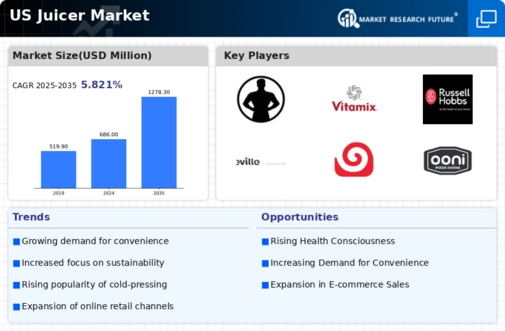The US Juicer Market is characterized by a dynamic competitive landscape where various brands vie for market share through innovation, product differentiation, and strategic marketing initiatives. With an increasing consumer shift toward health and wellness, the demand for juicers has grown significantly, resulting in a plethora of options available on the market. Companies are focusing on enhancing their product offerings to cater to diverse consumer preferences and dietary trends, which has led to the emergence of different types of juicers, including centrifugal, masticating, and cold-press juicers.
As more consumers adopt healthy lifestyles and seek to incorporate fresh juices into their diets, the competition intensifies among manufacturers, driving advances in technology, design, and functionality.Jack LaLanne has established itself as a notable player in the US Juicer Market, primarily characterized by its strong brand identity and reputation for quality. The company has effectively positioned its products as essential for health-conscious consumers, which has resonated well with the growing trend of juicing for health benefits.
One of the key strengths of Jack LaLanne is its ability to provide durable and user-friendly juicers that cater to a wide audience, from beginners to more experienced users. The brand often emphasizes performance and ease of use in its marketing, which has contributed to its credibility and appeal among consumers seeking reliable juicing solutions. This strong positioning within the market has allowed Jack LaLanne to maintain a solid presence in an increasingly crowded space.Waring has also made a significant impact in the US Juicer Market by offering a diverse range of products designed for both personal and commercial use.
The company is known for its powerful juicing machines that emphasize durability and performance, making them popular among both home users and businesses in the food service industry. Waring's strengths lie in its extensive experience in the culinary equipment sector, which has enabled the brand to leverage its knowledge in creating juicers that meet high standards of quality and efficiency. Additionally, Waring has pursued strategic partnerships and potential mergers to broaden its product offerings and market reach within the US.
This focus on innovation, coupled with strong distribution channels and robust customer service, has solidified Waring's standing as a reliable manufacturer in the juicer market, catering to the evolving needs of consumers and businesses alike.
























